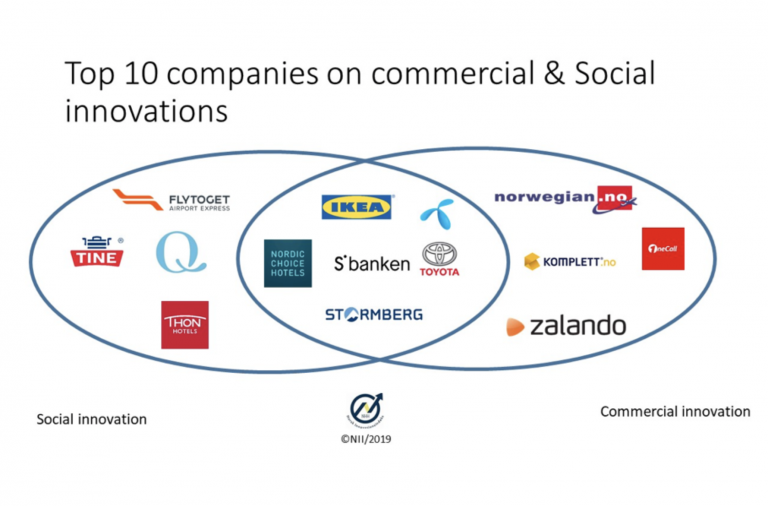
A New Logic for Economic Growth
A linear economic growth logic is no longer sustainable. A call for a sustainable growth that make people thrive, is required.
In 2018, Oxford economist Kate Raworth gave an interesting TedX-talk on economic growth. A filled to capacity auditorium jumped to their feet when she finished. Her point of departure was that contemporary thinking on human prosperity is linked to economic growth like an airplane that after takeoff, never stops climbing.
For politicians and economists, a stagnating or retracting economy is not a good sign and Gross Domestic Product (GDP) is a strong indicator whether the economy is heading in the right direction. Today, the sustainability of the growth logic is challenged.
The growth dominant logic prevailed in the 1930s and is elegantly discussed in a book from 1960: “The Stages of Economic Growth: a non-communist manifesto” by W.W. Rostoff. In chapter 2, the author defines five stages:
- The post-Newtonian society untouched by man’s capability of regularly manipulating the environment to his advantage
- The pre-conditions for take-off
- The take-off
- The drive to maturity
- The age of high mass-consumption
The Swedish activist, Gretha Thunberg, made us painfully aware during her resent UN-speech that we are currently at stage 5 – a stage that is not sustainable. Few would challenge that we need a new logic for economic growth. Professor Raworth state that: “we need to stay within the boundaries of a sweet spot where people thrive”.
For all to thrive, some have to give
Currently, too many economies in the first world are outside the boundaries and over-consume the world’s resources. These countries must reduce economic growth. At the same time, millions of people must be welcomed into the sweet spot by increasing economic growth. For all to thrive, some have to give. In the developed world, there is a movement toward 3Rs: Reuse, Recycle, and Reduce.
In addition, I can see four initiatives that can bring us closer to the sweet spot: increased productivity, sharing economy, circular economy, and innovations.
Increased productivity
When more firms and customers can do more with less, we have increased the total productivity. But because customers’ input/output ratio is not estimated, it is hard to say how productivity in most, if not all developed economies, progress. Another issue is that several of the leading software products available for consumers are free of charge, e.g. Facebook, Google, etc. In an effort to estimate the value of free software for consumers, Erik Brynjolfsson and his colleagues at MIT developed an alternative measure for economic development: GDP-Benefits for consumers. Free software used intensively by consumers whose input (e.g. time) or output (e.g. benefits) is not measured, creates a productivity measurement challenge. If you cannot measure it, you cannot manage it!
Sharing economy
Sharing economy is carried forward by a wave of platform companies like Lyft, Airbnb and TaskRabit who efficiently and effectively connect buyers and sellers via a platform. The basic idea behind the sharing economy is to better utilize unused resources like time and assets. From an economic growth perspective, utilizing free unused assets may increase GDP significantly. In an EU28-report they found that GDP could theoretically increase by EUR572 billions each year in the region simply by utilizing free resources more effectively. Today, we see several providers turning their goods products, into a service like cars as a service.
Circular economy
Circular economy is in the vogue as more consumers and leaders realize that the old linear value chain (production-distribution-consumption-destruction) is creating a lot of waste and is no longer sustainable. Circular economy is rethinking the entire process and every component of any good or service with a view to bring it back into productive usage later. The end-result is reduced waste. A Norwegian provider of asphalt changed his b-model from linear to circular by leasing the asphalt to local authorities, collecting it after two to three years, refurbishing the asphalt before putting it back. The new mantra is: One party’s waste is another party’s raw material!
Innovations
Innovations are the mother of all progress – more often than not driven by technology. For service-oriented firms technology has given us self-service technology enabling customers to serve them self without interacting with frontline employees. Technology has put smartphones in the hands of consumers and given them tremendous benefits. Technology has given us new platform-based business models and services that have challenged the incumbents in numerous industries. 5G with its speed and volume of data will revolutionize services yet again. Internet of Things (IoT) will enable firms to collect vast amounts of data to be used for predictions, decisions making, and innovations. The challenge is to better commercialize inventions and scale firms.
Toward the economic sweet spot
In Norway, Sweden, and in the USA, we measure customers’ perception of numerous’ commercial and social innovations based on the same methodology developed at NHH Norwegian school of Economics and marketed as the Norwegian Innovation Index (NII), The Swedish Innovation Index (SII), and The American Innovation Index (AII). In Sweden, Center for Service Research (CTF) at Karlstad Business School is operating the SII. In the US, Rockbridge Associates and Fordham University, Gabelli School of Business, operate AII. Firms that are perceived as high on commercial and social innovations are considered to be in the sweet spot by contributing to a new sustainable business logic. First, they provide customers with innovations that they perceive as valuable. Second, they contribute to society through their “green” innovations making them good neighbors. In sum, commercial and social innovations create a strong and emotionally base loyalty – which is good for future cash flow and firm value.

The guest article was published on servsig.no last week.